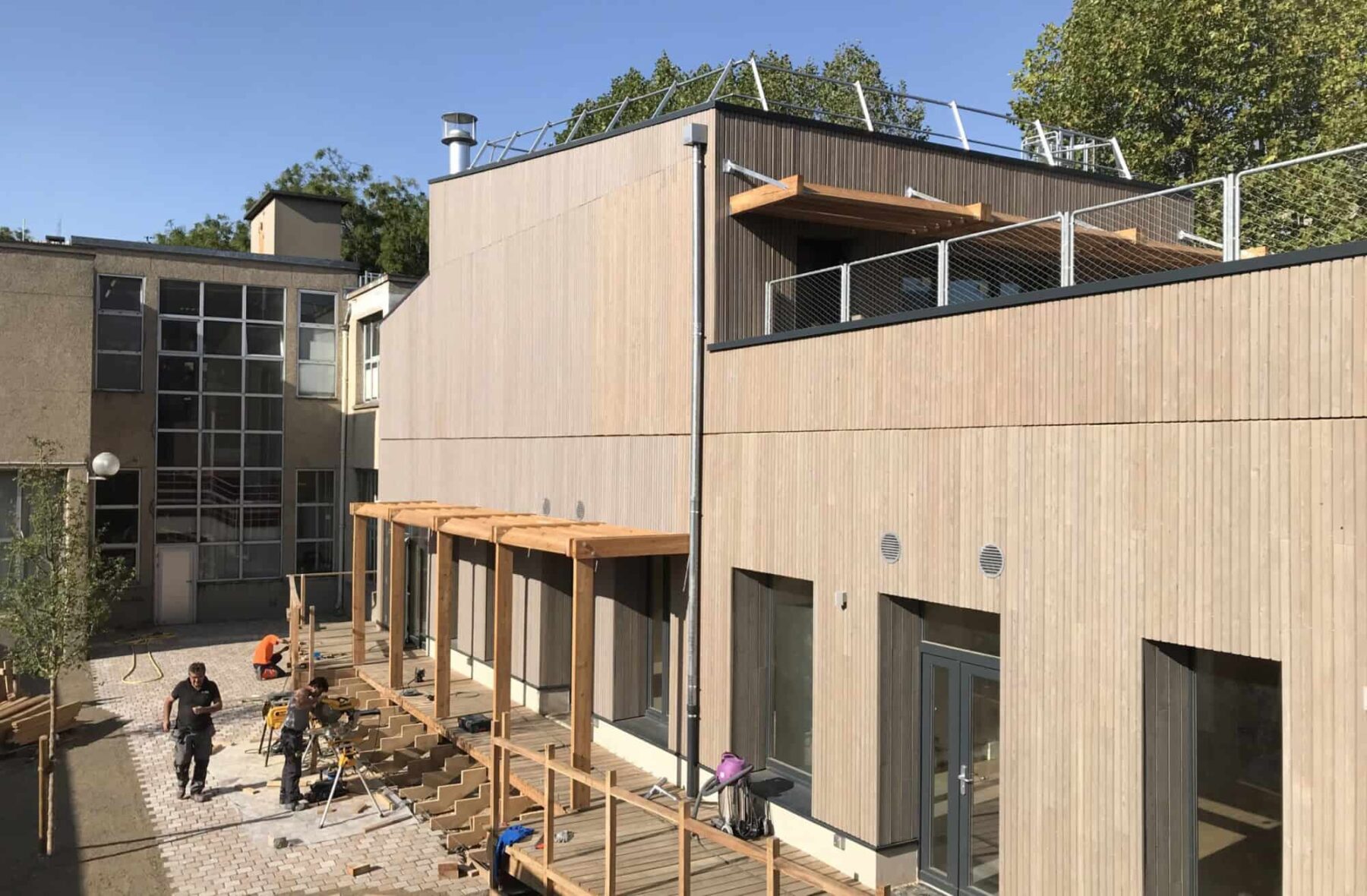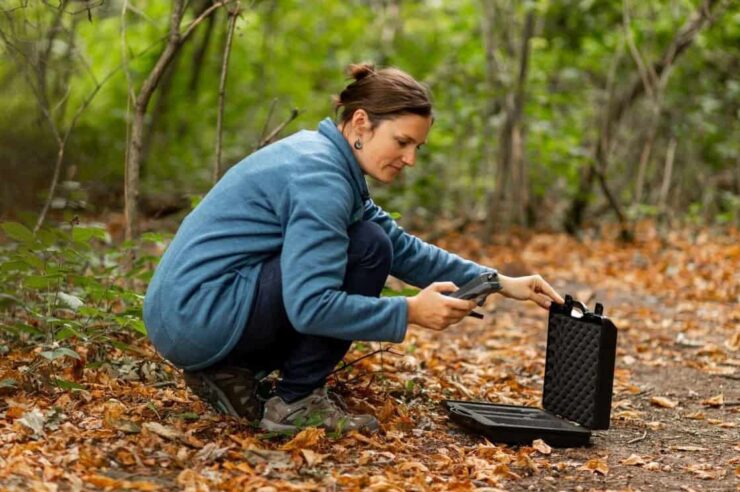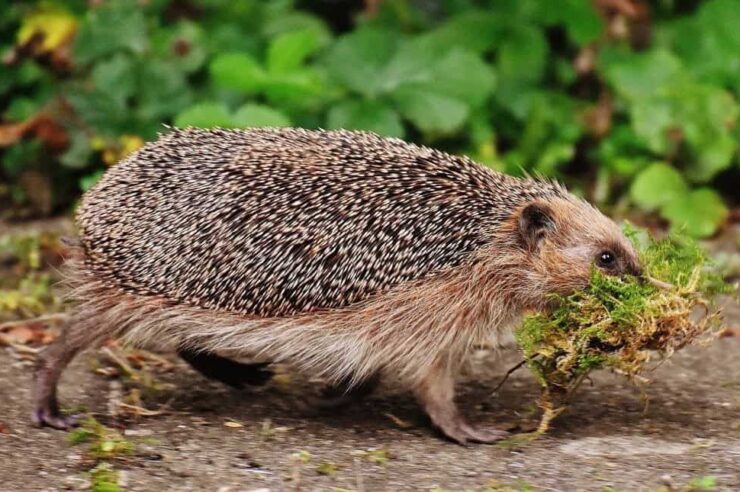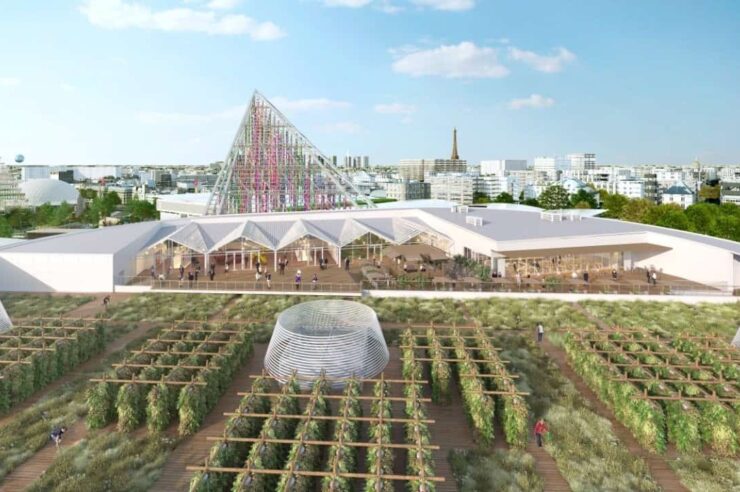With the construction industry the greatest creator of waste in Paris and elsewhere, what can be learned from the French capital’s new ‘bio-house’?
On the south-eastern edge of Paris, in the shadow of the 1950s, concrete-laden Olympiad towers, is an experiment being run by what is perhaps the Nasa, or even Charlie’s Chocolate Factory, of eco design.
Within 228 square metres is an oak staircase made of 80 recycled doors, digital radiators heated as a byproduct of the computer processors within them, and 16 hyper-efficient solar panels that filter and ventilate the building’s air as well as producing electricity. The structure is almost entirely made of ‘bio-sourced’ materials – those that grow naturally, such as wood and straw.
Known as La Petite Fabrique (the Little Factory), officials at Paris city hall hope this innovative prototype could help the French capital reach its pledge to become carbon neutral by 2050. Given that building construction is the leading source of waste in Paris, accounting for 9.5m tonnes of rubbish a year and 20 per cent of the city’s greenhouse gas emissions, it is seen as a sector with enormous potential for improvement.
“It’s a great waste,” says Nathalie Chazalette, who along with fellow architect Delphine Paillard, leads a small, publicly funded research and development team called the Ecological Transition Gateway. “We want this project to inspire every single construction company to do the same. We want them to at least reach this level of sustainability, but – if possible – even more.”
Every inch of the two-storey Little Factory, which at the end of 2020 was launched as two school libraries and a classroom, exudes an extraordinary attention to detail. Insulation consists of 225 straw bales in the walls and a 25cm layer of recycled cardboard in the floors, which rest on top of reusable 39 steel piles – producing 50 per cent less CO2 than concrete – driven into the ground. Fans without blades hang from the ceiling like spaceships, creating a Covid-safe, 360-degree vortex of ventilation, while low-tech, triple-glazed windows keep the interior’s temperature balanced by slowly filtering air.
Some of the structure’s wood comes from the Bois de Vincennes public park a handful of kilometres away. The upstairs terrace will feature a vegetable garden, and the tarmac from the courtyard has been removed and replaced with living “vegetated” floor slabs that are part-mineral, part-grass, soaking up excess rain.
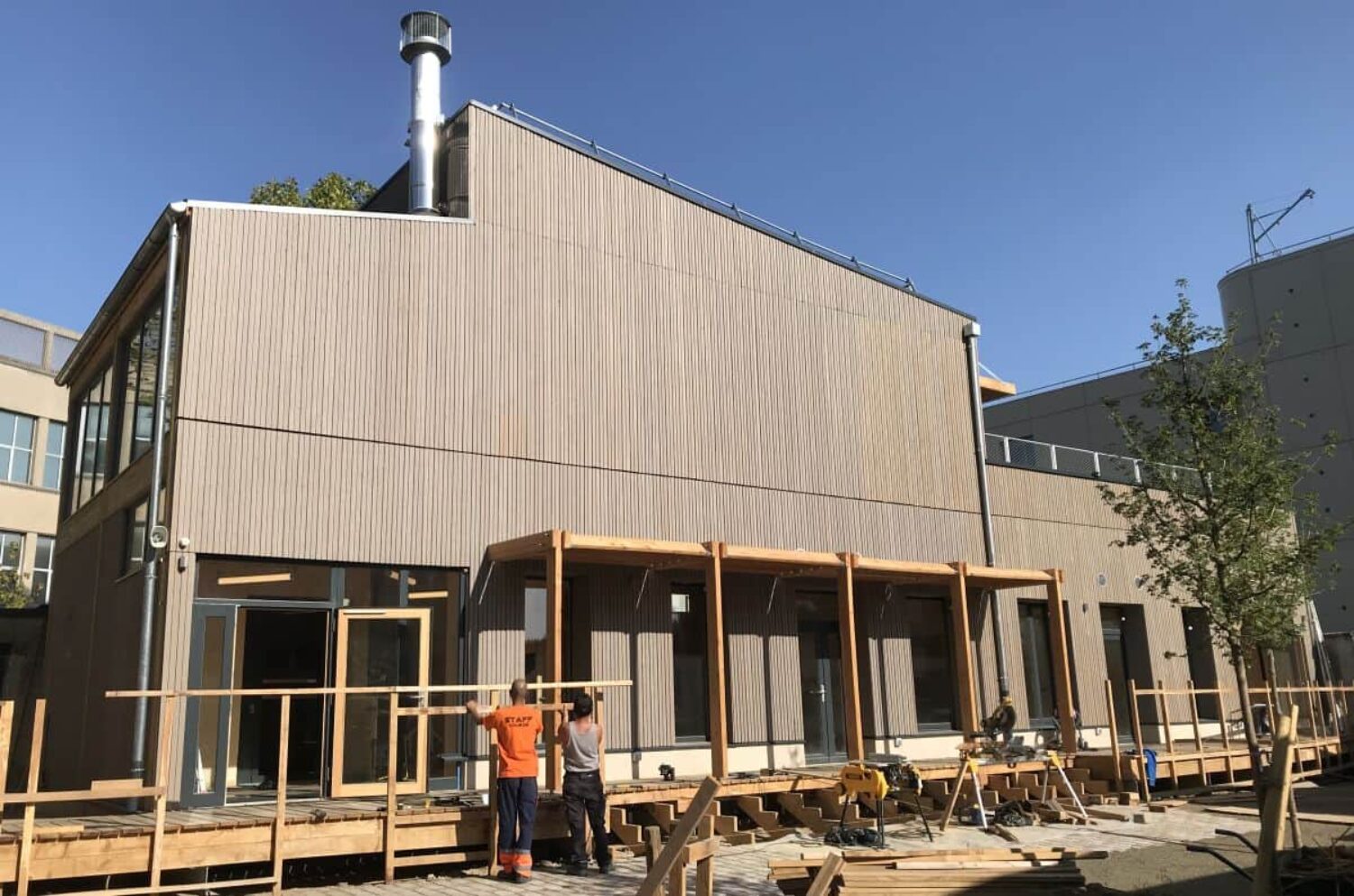
The structure is almost entirely made of ‘bio-sourced’ materials, such as wood and straw. Image: Ville de Paris
The motto of Chazalette and Paillard is to “build differently” in a very practical sense, using eco-friendly materials and drawing on strengths of the circular economy. The bricks that make up the inner wall and plaster, for example, are made of raw earth gathered while boring holes for the Grand Paris Express transport project. They were put together by a team of 17 female refugees from Les Bâtisseuses, a charity that trains refugee women in ecological construction to help them integrate into society.
“Nothing like it really exists,” says Chazalette. “But we didn’t come up with all of these innovations. Our innovation was to put all the amazing work we discovered through the course of our research together.”
The project officially launched in September 2018, but construction didn’t begin on the bio house until a year later. Instead, the team’s initial focus was on intensive research. Studies on the site’s micro-climate were carried out to measure variables such as wind, sunlight and rainfall, which led to design adaptations such as wooden sunshades that can be extended over the windows to counter excessive heat. At the same time, Chazalette travelled to a number of projects across France including in Rosny-sous-Bois, Brittany, and the Loire Valley to learn from the crème de la crème of French eco construction.
We want this project to inspire every single construction company to do the same
The result of such attention to detail is a building that contains no concrete and weighs just 196 tonnes (compared to an estimated 1,300 tonnes had conventional materials been used). Only 60 tonnes of material will not be compostable or recyclable, such as laminated glass and moisture barriers in the walls, and the building will largely be powered by renewable energy. Yet the budget of €510,000 (£447,000) to create the structure, which had already been decided before Chazalette and Paillard’s eco team took on the project, remained exactly the same.
While France is itself already a world leader when it comes to modern, bio-sourced construction – from 2022, for example, all new public buildings must be built from at least 50 per cent timber or other natural materials – the Little Factory is the first project of its kind carried out by public authorities in Paris.
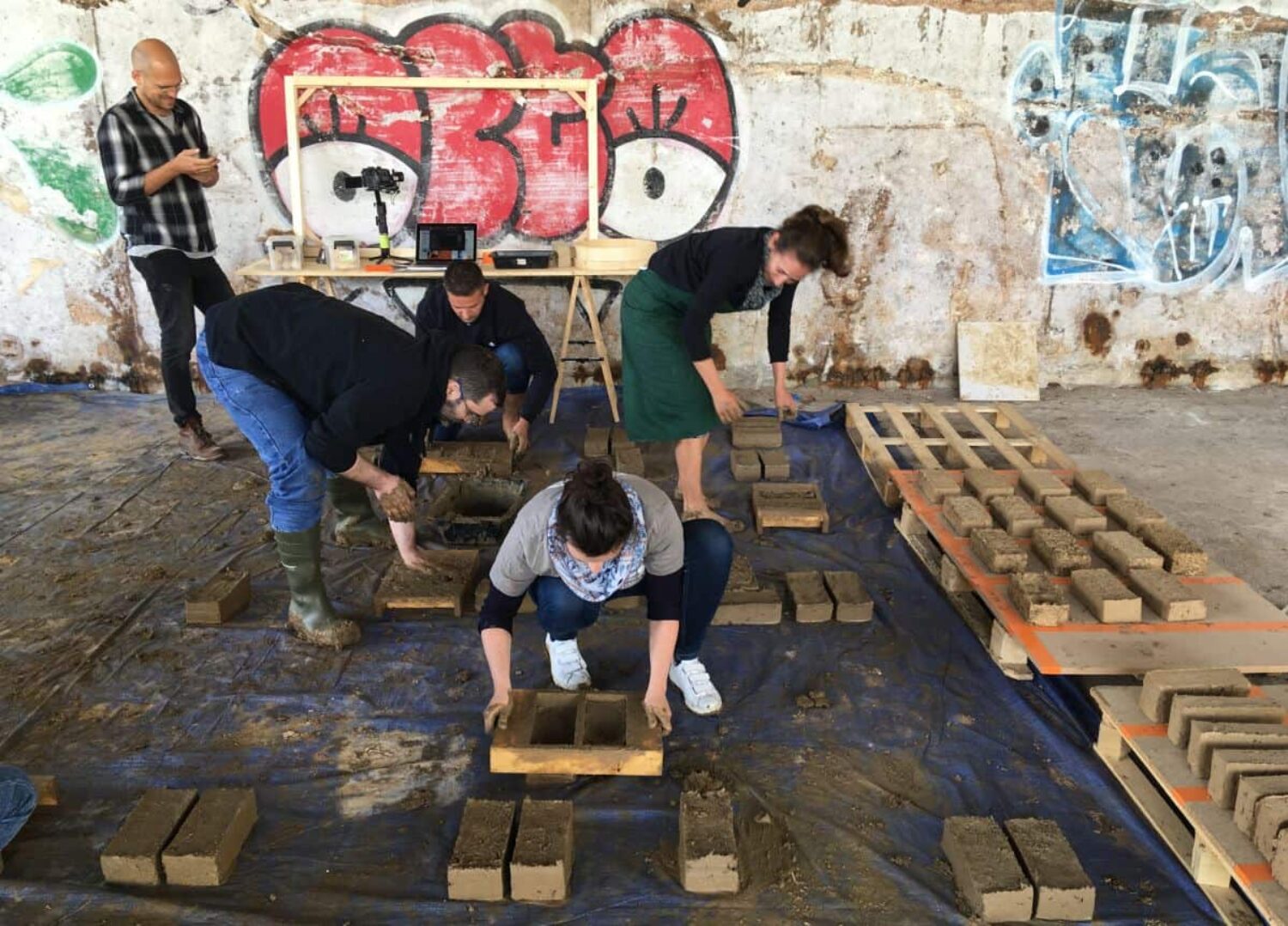
Bricks for the building were made out of raw earth by a team of female refugees. Image: Ville de Paris
One of the few disappointments was that the outer walls were built with Siberian larch wood to meet fire safety regulations because fast-growing local alternatives burn too quickly, according to Chazalette. Extensive rainfall last October also led to leakage issues in the middle of construction and the team weren’t able to obtain insurance to use certain recycled materials they wanted to. But, she believes, the only real limit to scaling up this model is the time it takes for suppliers of ‘bio-sourced’ materials to increase capacity.
“This is the first step to mobilise the sector, to show it’s possible,” says Chazalette. “This experiment was to learn from any problems we encountered so that others have the solution.”
Referring to Paris’ carbon-neutral pledge, she adds: “We now need to make it a reality – it’s what the politicians voted for.”
Main image: Ville de Paris
